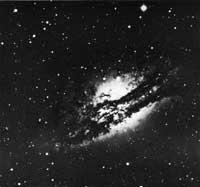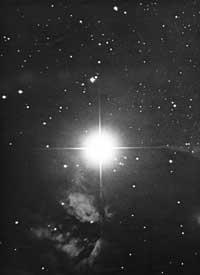Life Off Earth (I)
The debate on the existence of life outside the earth is one of the issues to be dealt with cyclically. No, perhaps because there is a lot of information about the problem, but because the lack of progress that limits the broad problem of the problem, makes the debate suffer from time to time (on similar arguments). The knowledge that would solve the problem to some extent must come from such diverse areas and refer to issues so deep that in the short term we cannot expect great advances at the theoretical level. In short, we also have great difficulties in limiting the mere probability that there is a life off Earth. Let's see it differently.
Much progress must be made in the field of astronomy in the configuration of planetary systems and in regions where life development is viable. But the fulfillment of the conditions that Astronomy imposes on the genesis of life does not in itself guarantee this creation. The next step is the creation of beings capable of reconstructing molecules according to a model (genetic code). That is, you have to create a structure that forms proteins according to a code.

The bases on which these structures are based and organic molecules that can form amino acids have been found to be spatially disseminated and have been shown to form also on Earth when their state was formed and slightly stabilized. But the path that goes from being amino acids to introducing proteins and structures that reconstruct them is very complex and most of the steps of this prebiotic evolution are unknown. As long as the great work of biochemists is not to a large extent, we cannot decide whether that evolution is likely or not.
Normally, when we talk about life off Earth we talk about intelligent beings capable of approaching us or communicating with us. In this case, the uncertainty in the aforementioned probability calculation increases. Suppose the most basic form of life arises. What is the probability that this life will generate an intelligent species? Undoubtedly, evolutionary biologists are still far from the reliable answer to the question. And the ignorance of anthropologists, sociologists or psychologists is no less when determining whether intelligent life necessarily leads to technological civilization.
In 1961, a group of astronomers and engineers addressed this issue at the prestigious meeting held at the Green Bank Observatory. At that meeting he proposed to F. Known formula to calculate the number of technological civilizations in our Galaxy:
N = R . f. fb . fi . ft. L
where
- N: number of possible technological civilizations in our Galaxy,
- A: Stars born every year on the French Way,
- fp: sun-like stars with planets,
- fc: percentage of planets with conditions suitable for life generation,
- fb: percentage of planets where life was born,
- fi: intelligent life probability,
- ft: percentage of those in which technological civilization has developed, and
- L: average duration of technological civilizations.
We have explained in previous paragraphs the difficulties that exist to contemplate the values of the products that appear in this expression, or rather, the ignorance that we have. The logical consequence is the difference between the different valuations of N. The à la carte values given to biological products vary greatly the results.
In general, the eyes of astronomers are much more optimistic than those of biologists. For the most pessimistic of the latter we are the only ones in the Galaxy. They say that the alternatives that are on the way from the basic living being to the human being are so abundant that it can be considered almost impossible for the same sequence of selection to occur twice. Among the optimists, we have dozens of civilizations from which they say they could be some millions.
C. The famous Sagan three decades ago, based on the calculations made in the analyzed expression, proposed an adequate average quantity of the most technological civilizations of the order of a million. Undoubtedly, today the trend is more pessimistic, and in any case always insists on the speculative character of the eyes.

However, the issue is not negligible in any way, and despite its small size, quantities are always foreseen for projects related to this problem. Now the work has focused on detecting electromagnetic radiation emitted by one of the possible civilizations. There is no doubt that a technological civilization must know the electromagnetic waves and their use. Therefore, although no emission has been made to communicate with other living beings in the Galaxy, any other emission could be received from a distance of a few light years. But we will deal with this problem in the next issue.
Finally, we will mention the efforts made from Earth to communicate with other civilizations. On the one hand, we have the recordings that were sent in the Pioneer and Voyager spaces that leave outside the Solar System, but as the fastest and cheapest way to achieve communication are the electromagnetic waves, scientists have also used them to make an effort.
On November 16, 1974, from the Arecibo radio telescope (Puerto Rico), at its premiere, a signal was issued to the globular cluster M13 in the constellation of Hercules, with a radiation of 12.6 cm wavelength. The message consisted of 1,679 binary characters with the aim of providing images and other information of the man, the Solar System and the Arecibo radio telescope. The M13 cluster has about 500,000 stars and who knows how many planets. However, it is more than 20,000 light years away. Therefore, even if there is a response, it will come within 50,000 years.
Ephemeris SUN: On June 21 enters Cancer in 14h 48min (UT). It is the summer solstice.
MERCURY ON PLANETS: June 25 will be in lower conjunction. If we see it, we will try it in the first days of the month.VENUS: we see it at dusk, one hour after sunset and another at sundown.MARTITZ: it leaves at dawn before the sun starts at the end of the month, but we still do not have it in proper conditions. Very low. At dusk like Venus, we have it quite high. Therefore, after dusk we can see it well. Therefore, it is in good condition to be able to see it. Before dawn. |





